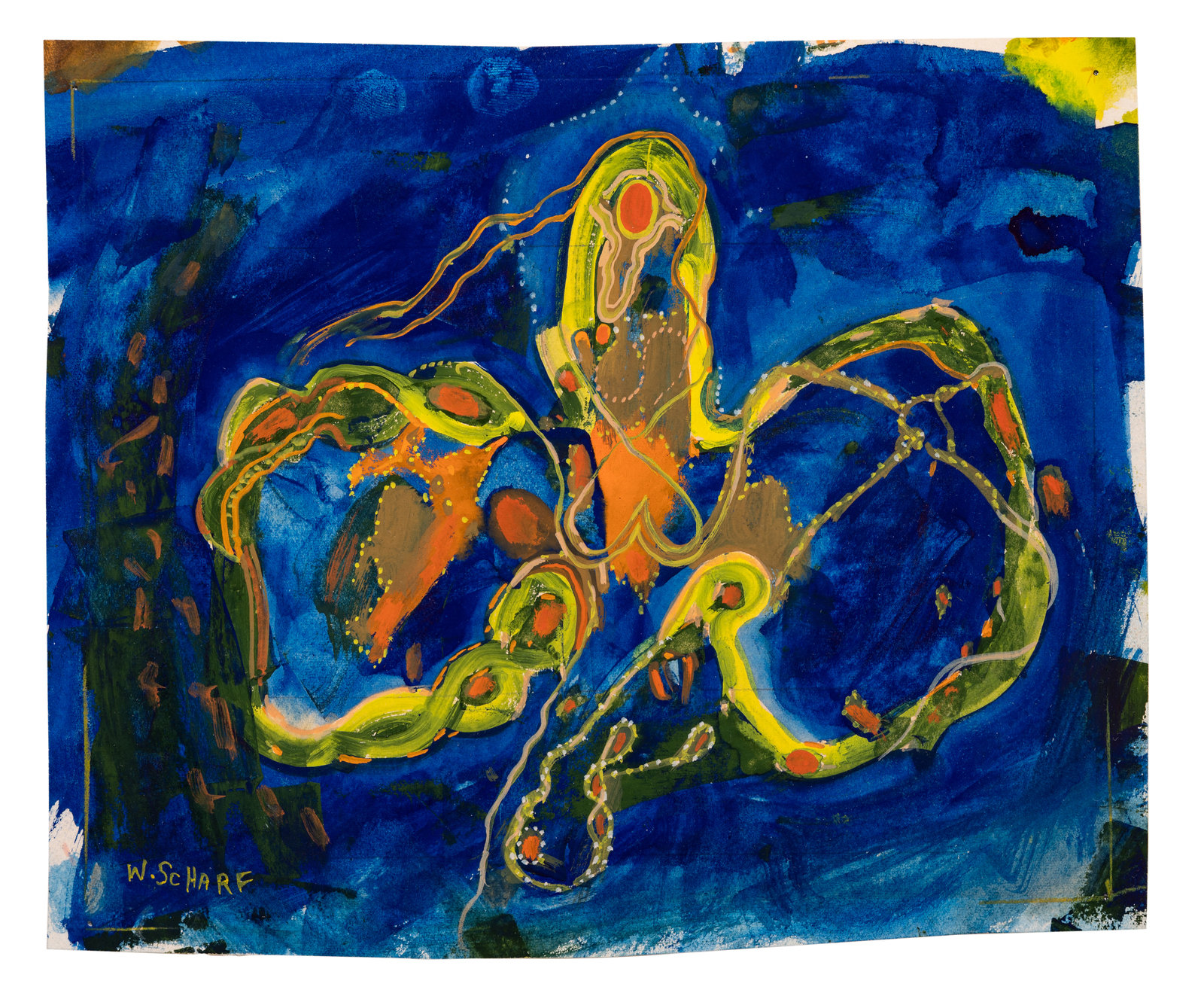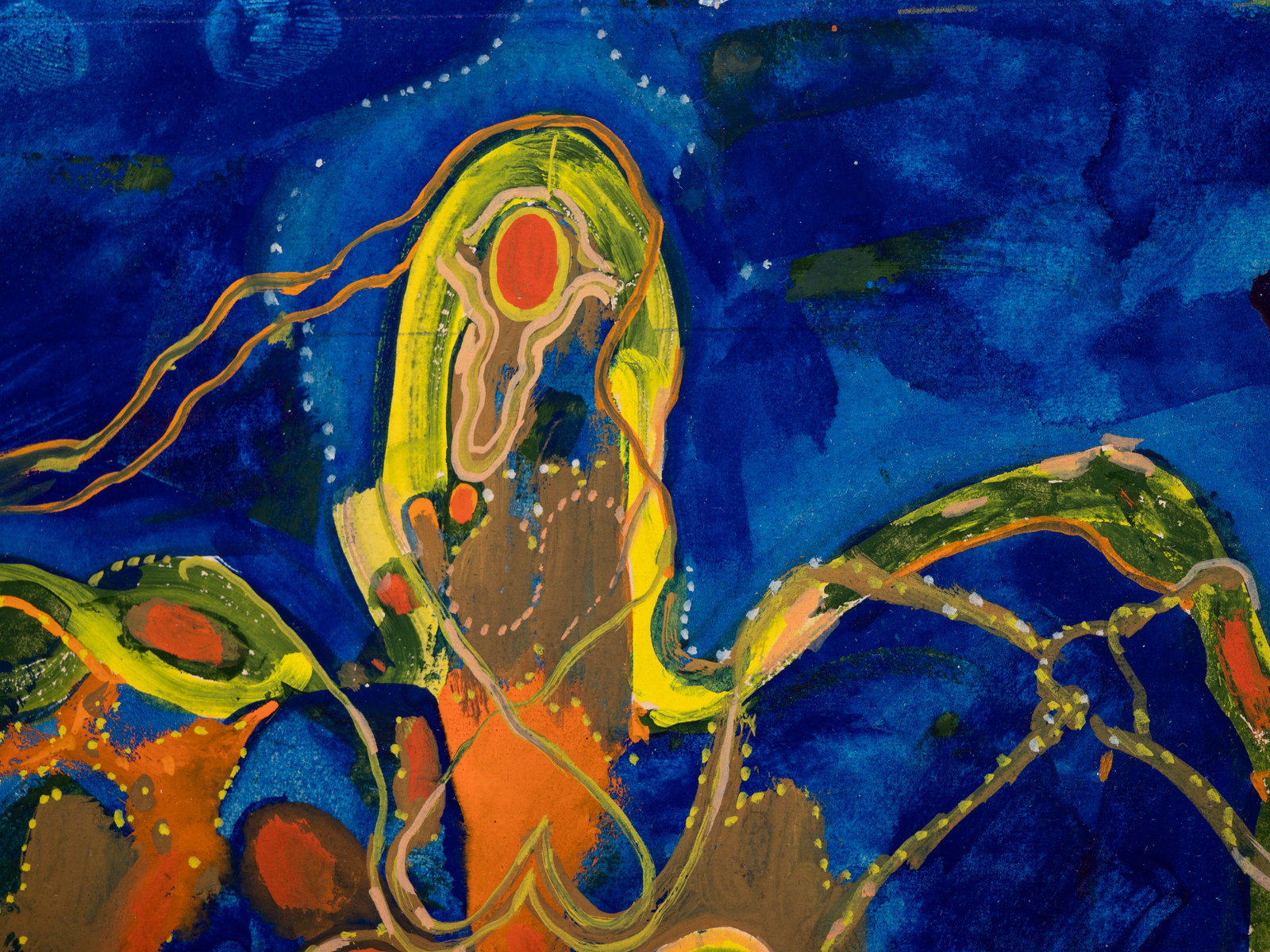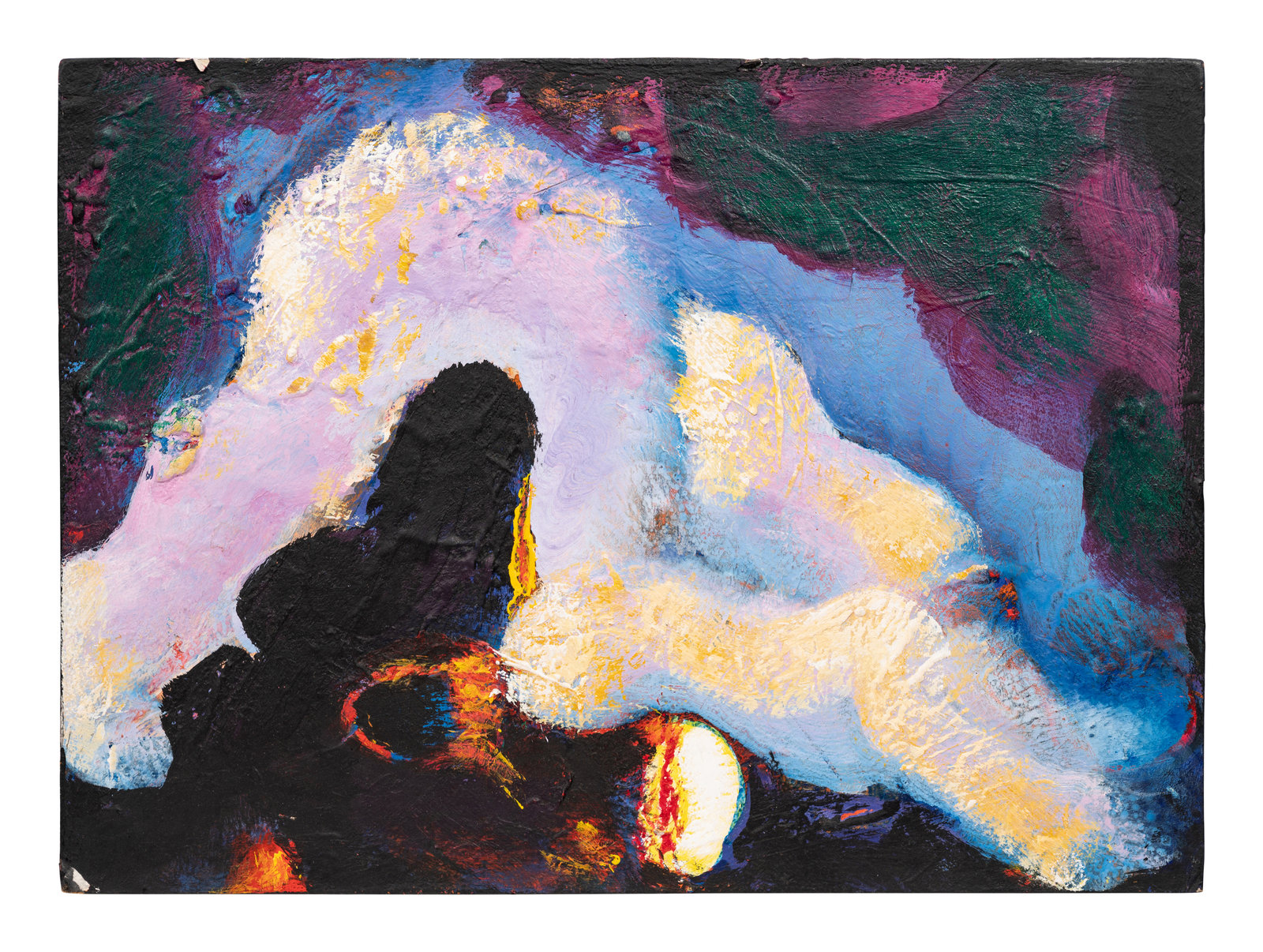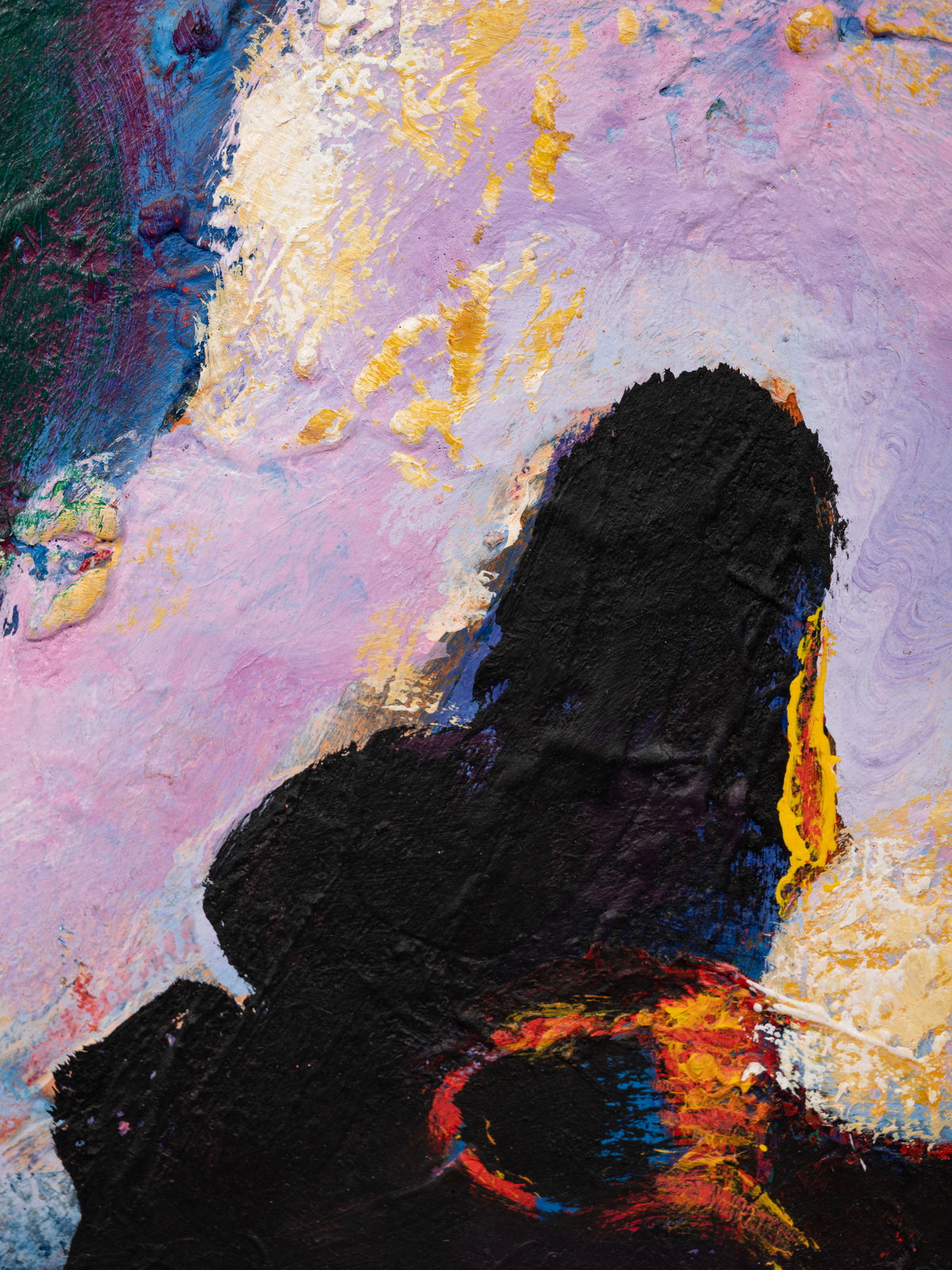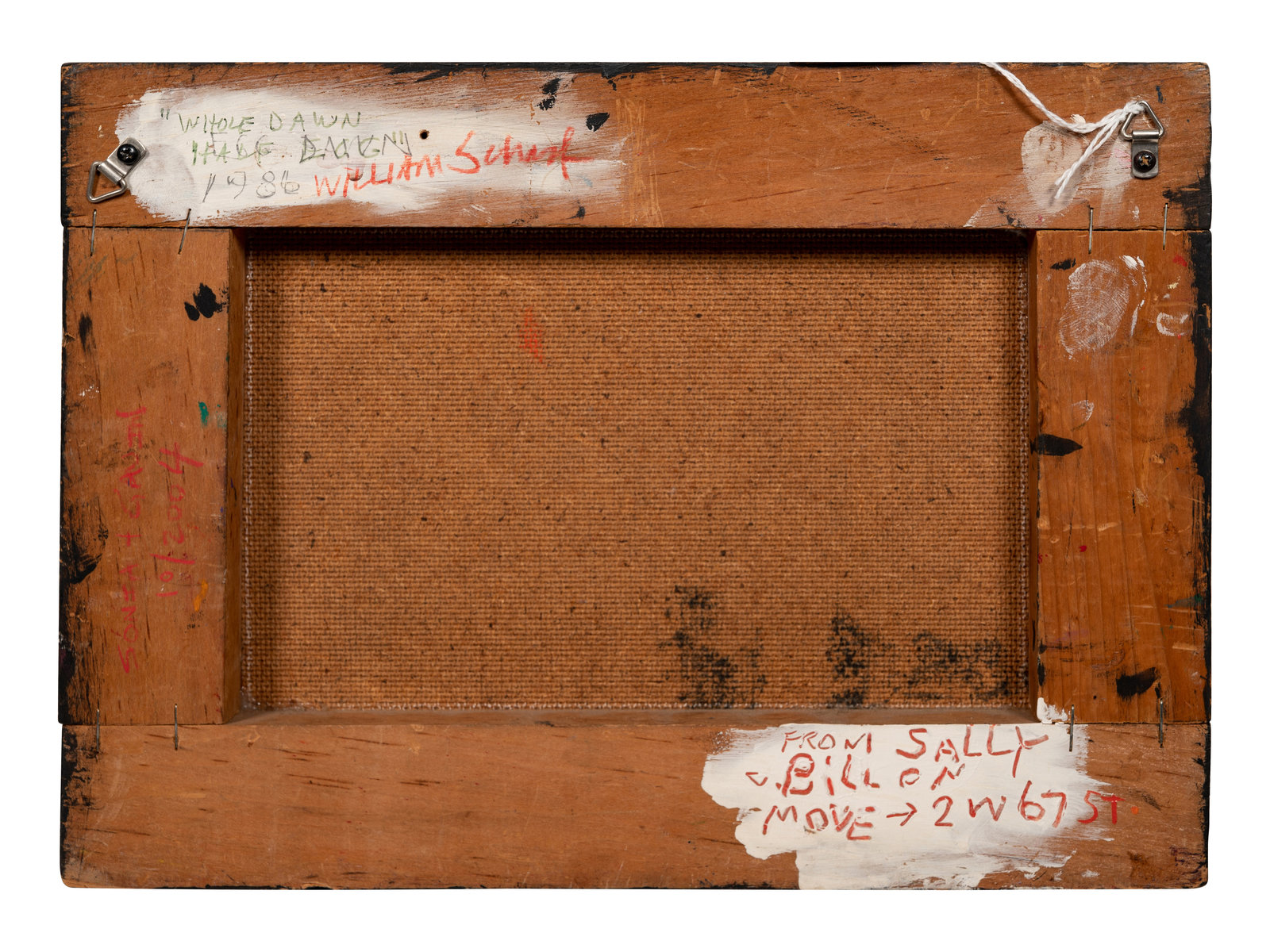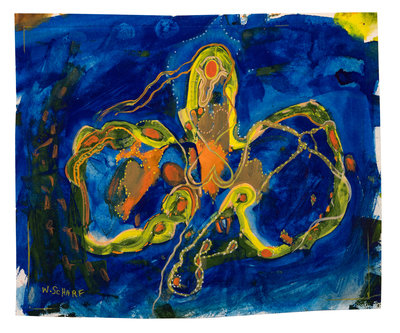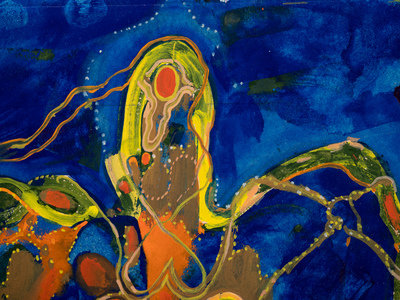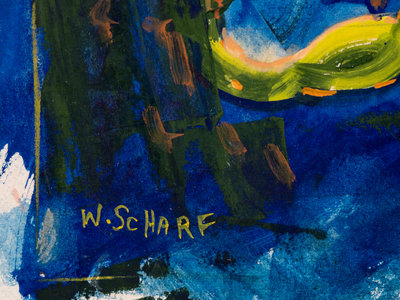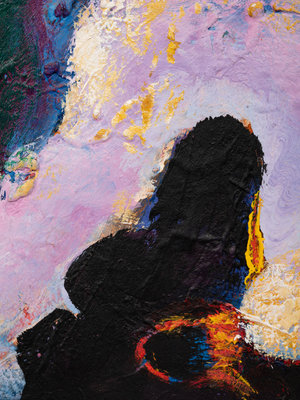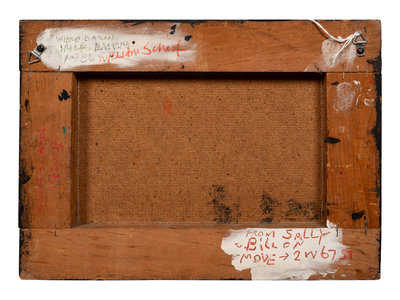William Scharf
(American, b. 1927)
Whole Dawn, Half Egg, 1986 and Untitled (a pair of works)
Sale 907 - Post War and Contemporary Art
Sep 28, 2021
10:00AM CT
Live / Chicago
Estimate
$800 -
$1,200
Sold for $5,000
Sold prices are inclusive of Buyer’s Premium
Lot Description
William Scharf
(American, b. 1927)
Whole Dawn, Half Egg, 1986 and Untitled (a pair of works)
oil on masonite and tempera on paper
signed William Scharf, titled and dated (verso) and signed W Scharf (lower left)
8 1/2 x 11 1/2 and 7 x 8 inches.
Property from a Private Collection, New York
Provenance:
Gifted to the present owner by the Artist
Lot note:
The present group of paintings, including Whole Dawn, Half Egg, 1986, and Untitled, by William Scharf span a decades long career and represent an artist who spent years exploring and refining his intensely realized inner vision. Although he is often grouped with the Abstract Expressionists, his unique oeuvre defies simple categorization. Ranging in size from miniature to immense, Scharf’s artworks teem with vaguely familiar forms that evoke Surrealism while also expressing the dynamism of Abstract Expressionism. His paintings embody a very individual and immediately recognizable pictorial vocabulary.
Scharf was a master of the drawn line and this is seen in the swooping, curving brushstrokes in such works as A Branch of the Egg, 1962 (Lot 28), San Francisco, 1973 (Lot 45), and Whole Dawn, Half Egg, 1986 (lot 46). He was a constant doodler who would fill reams of napkins with drawings while at dinners. The strength of motion of his line serves as a defining force in the open shapes of his larger canvases that are filled and then colored in. The primacy of line is also a part of what makes his smaller works, some measuring no more than 9 x 4 inches, so compelling. In Vegetable Oracle and Coronation of the Moth, both c. 1999-2002 (Lot 48), confident lines form mysterious, organic shapes, which themselves are incised with assertive, incised strokes of both paint and the paintbrush’s handle.
The role of color is likewise paramount to Scharf’s paintings and adds a pronounced physicality. A close friendship with Color Field artist Mark Rothko cemented Scharf’s interest in color and its emotive possibilities. He was an early adapter of acrylics, which lends a pure incandescence to his compositions. His loose brushstrokes, combined with semi-transparent layering of glazes, create swirls of richly juxtaposed color that generate a kaleidoscopic, almost hallucinogenic, sensation in works such as Grape’s Elephant, A Tryst of Ulnas, and Lung Prisoner, c. 1999-2000 (Lot 48). Elemental energy is aljso conveyed through the push/pull of dark and light pigments, as evidenced in The Scratched and Unfixed Air, 2007-8 and They Thought Their Worlds of Each Other, 2008 (Lot 29). The value of contrasting dark and light was recognized by Scharf, who stated, “As a painter I use the nearness of darks to enthuse myself to finding the brightness and brilliance of wondrous whites (quoted in William Scharf: Within White, exh. cat., New York, 2010).
The gesture of his organic lines and the painterliness of his pigments unite and construct transcendental dreams of other worlds. “Scharf’s paintings seek origins in what look like seeds, pods, winding roots, the interior channels of human bodies and plants—and reciprocally ponder stars and moons, planets and galaxies. He subsumes the darkness of night in a pervasive richness of color—there is no better colorist—that radiates, glows, and burns with inner light” (Barbara Novak, “Bill Scharf and the Aboriginal Self: The Blue Paintings,” William Scharf: Blue Is, exh. cat., New York, 2009). Visual references to mythological or religious themes suggest creation, destruction, and propagation, and are gateways to existential mysteries. The artist’s evocative titles similarly invite a search for landmarks, and yet the works reject overt meaning or obvious imagery. Scharf’s complex compositions are a search for things seen and unseen, the real world and a world imagined. They are shaded in mystery and wonder and defy easy interpretation.
Born in Media, Pennsylvania, in 1927, Scharf was encouraged to study art by American artist and illustrator N.C. Wyeth. He went on to study at the Pennsylvania Academy of the Fine Arts, the Barnes Foundation, and the Académie de la Grand Chaumière. Scharf moved to New York in the 1950s and became a close friend of Mark Rothko and his wife, Mell, as well as other artists of the New York School. A beloved educator, he taught at institutions including the School of Visual Arts in New York, the San Francisco Art Institute, Stanford University, the Pratt Institute, and the Arts Students League in New York, until his retirement in 2015. Scharf’s paintings can be found in the permanent collections of the Solomon R. Guggenheim Museum; the Brooklyn Museum; the Philadelphia Museum of Art; the Institute of Contemporary Art, Boston; the Irish Museum of Modern Art in Dublin; and the National Museum of American Art in Washington, DC.
Condition Report
Whole Dawn...: There is surface dirt and dust; wear along the edges and at the corners; an impact dent to the lower left corner with separation of the masonite plies and paint loss; isolated areas of paint loss in the upper left corner at upper edge and in lower right corner at right edge; otherwise this work appear to be in overall good and stable condition; this work is unframed.
Untitled: This work has not been examined out of the frame; this work is float mounted with all edges visible; there are process related pinholes in all four corners; otherwise this work appears to be in overall good and stable condition.
Framed: 12 x 13 1/2 inches.
Untitled: This work has not been examined out of the frame; this work is float mounted with all edges visible; there are process related pinholes in all four corners; otherwise this work appears to be in overall good and stable condition.
Framed: 12 x 13 1/2 inches.
The physical condition of lots in our auctions can vary due to
age, normal wear and tear, previous damage, and
restoration/repair. All lots are sold "AS IS," in the condition
they are in at the time of the auction, and we and the seller make
no representation or warranty and assume no liability of any kind
as to a lot's condition. Any reference to condition in a catalogue
description or a condition report shall not amount to a full
accounting of condition. Condition reports prepared by Hindman
staff are provided as a convenience and may be requested from the
Department prior to bidding.
The absence of a posted condition report on the Hindman website or
in our catalogues should not be interpreted as commentary on an
item's condition. Prospective buyers are responsible for
inspecting a lot or sending their agent or conservator to inspect
the lot on their behalf, and for ensuring that they have
requested, received and understood any condition report provided
by Hindman.
Please email conditionreports@hindmanauctions.com for any additional information or questions you may have regarding this lot.
